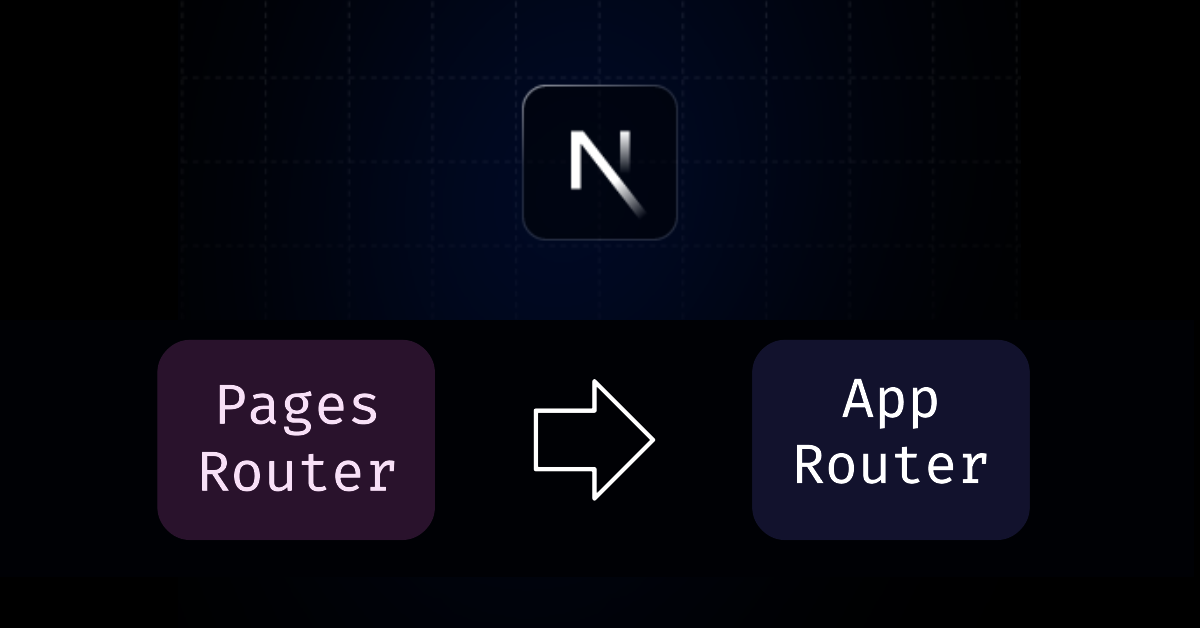Next.js App Router vs Page Router
Confused between Next.js App Router and Page Router? Learn the key differences, benefits, and when to use each routing system for your React applications.

Next.js 13 introduced the revolutionary App Router, but many developers are still wondering whether they should migrate from the traditional Page Router.
Which routing system is right for your Next.js project?
Let's dive deep into both routing systems and help you make the best decision for your application 👇
🔹 Page Router: The Traditional Approach
File-based routing with proven stability
- Simple file-based routing in the `pages` directory
- Established patterns with `getServerSideProps` and `getStaticProps`
- Mature ecosystem support and extensive documentation
Page Router has been the backbone of Next.js applications for years. Its simplicity and predictable behavior make it an excellent choice for developers who value stability and well-documented patterns.
Page Router Advantages:
- Straightforward file-based routing system
- Mature data fetching patterns
- Extensive community resources and tutorials
- Stable API with predictable behavior
- Better IDE support and debugging tools
- Easier migration from existing Next.js projects
🔹 App Router: The Future of Next.js
Server Components and enhanced performance
- Built on React Server Components for better performance
- Nested layouts and improved developer experience
- Streaming and Suspense support out of the box
App Router represents the future of Next.js, leveraging React's latest features like Server Components and Suspense to deliver better performance and developer experience.
App Router Advantages:
- React Server Components for reduced bundle size
- Nested and shared layouts
- Improved loading states with Suspense
- Better SEO with streaming SSR
- Enhanced data fetching with async/await
- Built-in error boundaries and loading components
🔹 Key Differences Breakdown
Understanding the technical distinctions
- Routing Structure: `pages/` vs `app/` directory
- Data Fetching: Hook-based vs Server Component patterns
- Performance: Client-side hydration vs Server Components
The differences go beyond just directory structure. App Router fundamentally changes how you think about data fetching, component rendering, and application architecture.
Technical Comparison:
| Feature | Page Router | App Router |
|---|---|---|
| Directory | pages/ | app/ |
| Data Fetching | getServerSideProps, getStaticProps | Server Components, async/await |
| Layouts | _app.js, _document.js | layout.js (nested) |
| Loading States | Custom implementation | loading.js files |
| Error Handling | _error.js | error.js (nested) |
🔹 Migration Considerations
Planning your transition strategy
- Gradual migration using both routers simultaneously
- Component refactoring for Server Components
- Data fetching pattern updates
Next.js allows you to use both routing systems in the same project, enabling gradual migration. This approach minimizes risk and allows you to migrate route by route.
Migration Checklist:
- Audit existing data fetching patterns
- Identify components that can become Server Components
- Plan layout structure for the app directory
- Update error handling and loading states
- Test performance improvements
- Update deployment and build processes
💡 Which Should You Choose?
✔ Choose Page Router for existing projects and when stability is crucial
✔ Choose App Router for new projects and when you want cutting-edge performance
At XpertBees, we help businesses migrate to App Router and optimize their Next.js applications for maximum performance and developer experience.
Ready to upgrade your Next.js application? Let's discuss your migration strategy and implementation plan.
Decision Framework:
Use Page Router for:
- Existing applications
- Tight deadlines
- Team learning curve concerns
- Third-party library dependencies
- Proven stability requirements
Use App Router for:
- New projects
- Performance-critical applications
- Modern React patterns
- SEO-heavy websites
- Future-proof architecture
Pro Tip: Start with App Router for new projects to leverage the latest React features, but don't rush to migrate existing stable applications unless you have specific performance or feature requirements.
Tags
Share this article
Frequently Asked Questions
Get answers to the most common questions about this topic
Still have questions? Contact our team for personalized assistance.
Related Articles
More insights from the same category

The Future of Web Development: Trends to Watch in 2025
Explore the latest trends shaping web development, from AI integration to edge computing and progressive web apps....